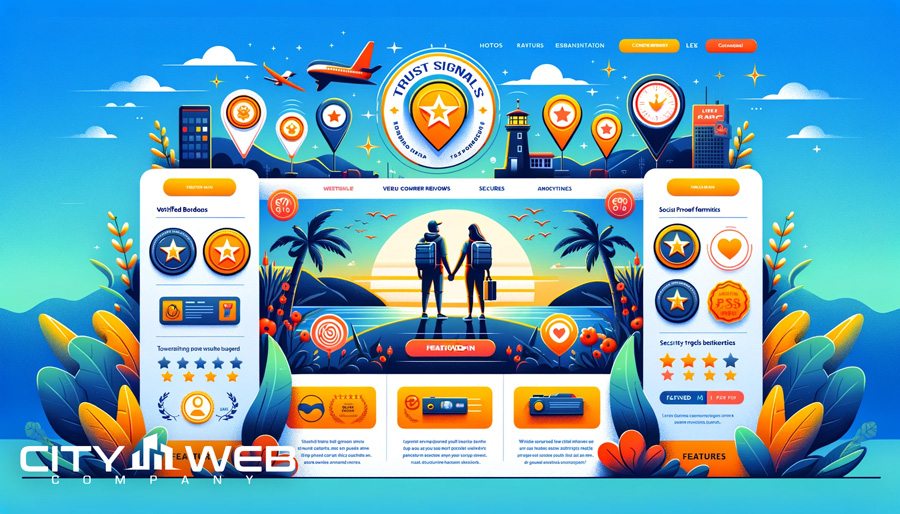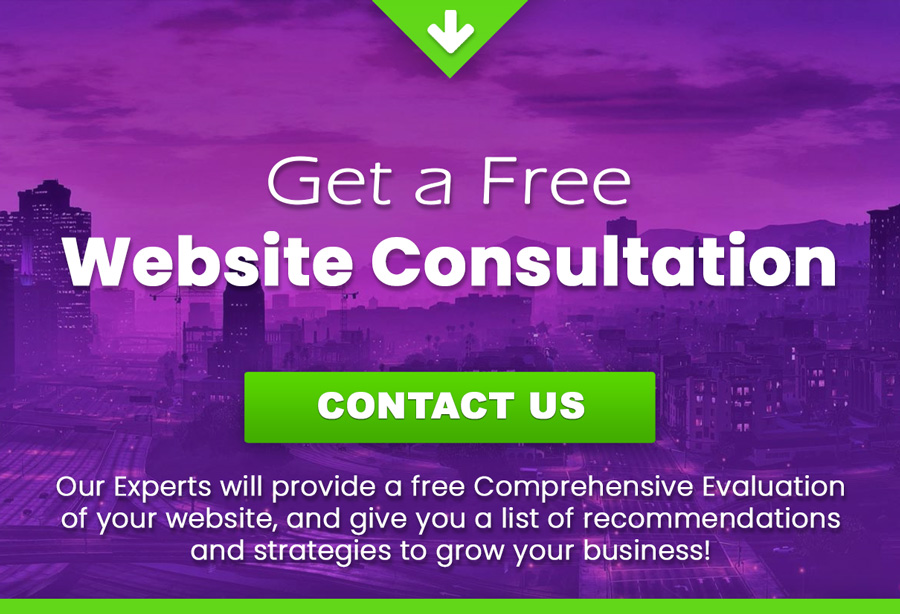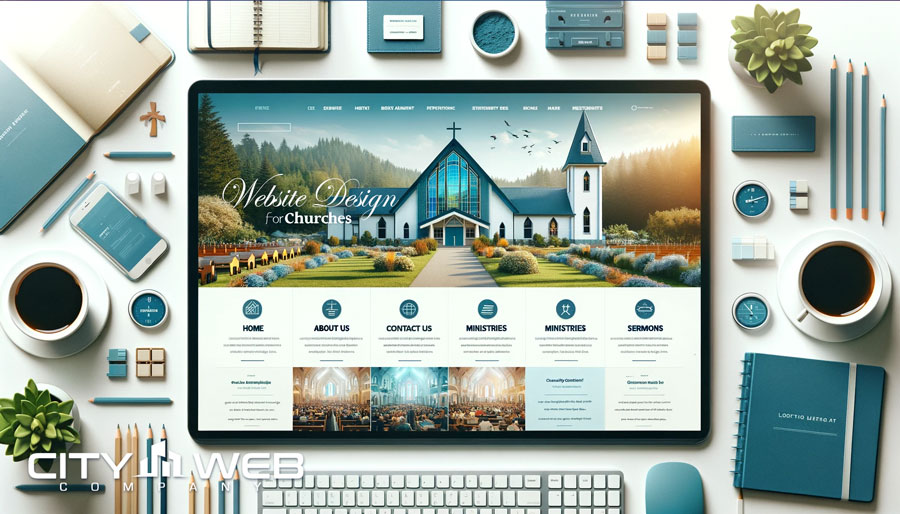Best Web Design Grand Junction: Expert Tips Navigating the web design landscape in Grand Junction…
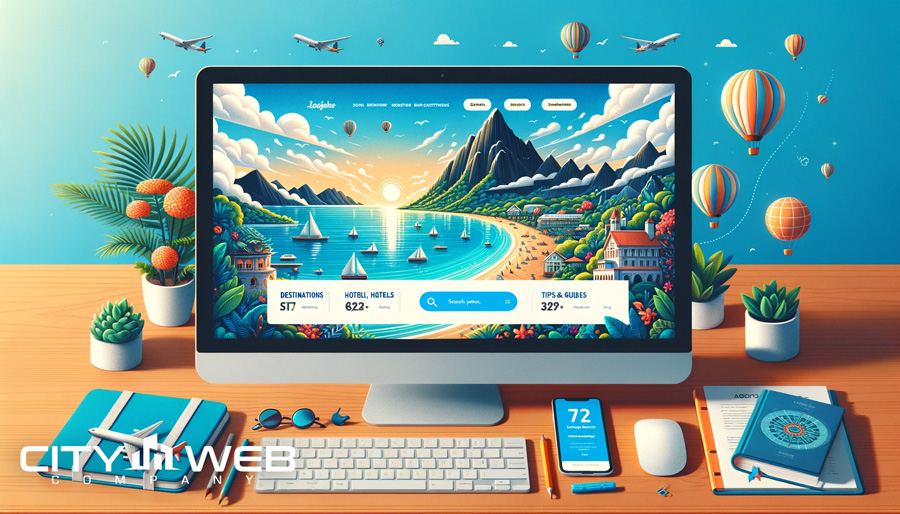
Best Travel Website Design Tips: Boosting Conversion Optimization
Table of Contents
Best Travel Website Design Tips: Boosting Conversion Optimization
In the landscape of digital ventures, envisioning a travel website is akin to plotting an intricate journey, a map that balances wonder with waypoints, and discovery with direction. Just as the right guide transforms a trek into an unforgettable odyssey, a meticulously crafted travel website can escort a browser through the digital terrain, converting them from a casual visitor to an avid adventurer. Design is the compass!
With the compass in hand, each decision must be a strategic step. A travel website should not only beckon with visual allure but also navigate users towards a clear objective: booking their next escapade.
Key Points:
- Visually appealing design, user-friendly navigation, and compelling content are essential for a standout travel website.
- Strategically place calls-to-action on prominent areas of your website to encourage conversions.
- Optimize your travel website with clear copy, compelling visuals, intuitive navigation, fast loading times, and a seamless booking process.
- Best practices for travel website conversion optimization include persuasive headlines, social proof, incentives, simplified booking processes, and A/B testing.
- City Web Company offers expert guidance and personalized recommendations for designing the best travel website. Contact us for a free consultation.
What are the current trends in travel website design?
Current trends in travel website design are constantly evolving to meet the changing demands and preferences of travelers. Here are some key trends to consider when designing a travel website:
- Mobile Optimization: With the increasing use of smartphones, it is essential to optimize travel websites for mobile devices. This includes responsive design, quick loading times, and easy navigation on smaller screens.
- Minimalistic Design: Clean and minimalist designs are gaining popularity in travel website design. Utilizing whitespace, simple typography, and intuitive layouts can create a visually pleasing and user-friendly experience.
- Stunning Visuals: High-quality and captivating imagery play a crucial role in enticing travelers. Incorporating large, immersive images and videos can help showcase destinations, accommodations, and experiences, fostering an emotional connection with potential customers.
- Personalization: Personalized experiences are becoming more important in travel website design. Implementing features like personalized recommendations, tailored content, and user-specific offers can enhance the user experience and drive engagement.
- User-Generated Content: Travelers often rely on reviews and recommendations from fellow travelers. Integrating user-generated content, such as ratings, reviews, and social media feeds, can build trust and credibility while providing authentic and relevant information.
- Seamless Booking Process: A streamlined and user-friendly booking process is essential for travel websites. Implementing intuitive search filters, clear pricing information, and a secure payment gateway can improve the overall user experience and increase conversion rates.
- Social Media Integration: Social media has a significant impact on the travel industry. Integrating social media sharing buttons and embedding social media feeds can encourage user engagement and generate organic exposure for your travel website.
- Sustainable and Responsible Travel: As sustainability becomes increasingly important, incorporating eco-friendly and responsible travel practices into website design can attract environmentally conscious travelers. Highlighting green initiatives, eco-friendly accommodations, and sustainable travel options can help differentiate your travel website.
By embracing these current trends in travel website design, you can create a visually appealing, user-friendly, and engaging website that meets the needs and expectations of today’s travelers.
Understanding User Intent
To craft a travel website that resonates with potential customers, it’s imperative to discern their intentions when they embark on their digital journey. Each visitor has a quest, whether it’s garnering information about exotic locales, comparing prices for their upcoming vacation, or seeking to book a flight or accommodation instantly. Recognizing these varied intents is crucial; it allows you to streamline the website’s architecture, ensuring that pathways to conversion are not just visible but intuitively aligned with users’ expectations, thus paving the way for an optimized and satisfying user experience.
Our partner company WP Commander specializes in maintaining your WordPress website for one low monthly price.
Contact City Web Company or visit: WP Commander to learn more how we'll give your website the white-glove treatment!

Identifying Your Target Audience
Understanding your audience is paramount—demographics, interests, and behaviors determine the trajectory of your website design.
Exceptional travel sites resonate with viewers; they mirror desires, aspirations, and engender trust.
An efficient travel website must cater to its audience’s preferences, from the adventure-seeker to the luxury traveler, creating a personalized user journey.
Optimized design threads the needle blending aesthetics with functionality, tailored to your audience’s characteristics, leading to a seamless path to conversion.
Mapping the User Journey
Understanding the user journey is integral to maximizing website conversions. It forms the basis for a tailored, frictionless navigation experience.
Having a clear grasp of this journey allows web designers to create visual and interactive cues that guide visitors efficiently through the desired actions. Each step from landing page to booking confirmation should be meticulously planned.
Analyzing data, such as user flow and behavior metrics, aids in refining the journey. This empirical approach ensures that the user’s needs and the website’s goals align effectively.
It is essential to identify potential pain points within this journey. Anticipating obstacles allows for preemptive design solutions to enhance user satisfaction and raise conversion rates.
By optimizing each stage of the user journey, you ensure a coherent and supportive online environment that fosters trust and encourages action.
Streamlined Website Structure
A well-ordered website hierarchy simplifies navigation, leading users through a logical sequence of choices towards their ultimate goal.
In travel website design, a clear and intuitive structure (think menu bars and dropdown lists) allows for easy location of information, from destination guides to booking forms, ensuring a reduced bounce rate and stronger user engagement.
This linear “decision-tree” approach correlates directly with higher conversion rates by minimizing confusion and decision fatigue.
Intuitive Navigation Design
An effective travel website must embody clarity and ease, guiding users effortlessly through their search and booking process.
- Accessibility: Ensure all navigation elements are easy to find and use across devices.
- Predictability: Employ familiar layouts and interactive elements to foster user confidence.
- Hierarchy: Clearly define the importance of each webpage using visual cues and strategic placement.
- Consistency: Maintain consistent navigation patterns throughout the website.
With a focus on user-friendly layouts, intuitive navigation becomes synonymous with a positive user experience.
Incorporating these principles is paramount in reducing friction and enhancing the user’s journey from curiosity to conversion.
Responsive Design for Mobile Users
In the digital era, a mobile-friendly website is not just an option; it’s imperative. The swift growth in mobile browsing demands adaptive web design to ensure seamless functionality across devices.
Since 2015, mobile searches have surpassed desktop, marking a definitive shift in user behavior. Consequently, the adaptability of your travel website to mobile formats is now critical, directly influencing booking decisions.
Indeed, Google’s prioritization of mobile-first indexing underscores the undeniable importance of responsive design. Websites optimized for mobile access witness enhanced user engagement and, by extension, increased conversion opportunities.
Embracing responsive design means the website automatically adjusts to fit the screen it’s displayed on. This fluidity ensures a consistent and accessible user experience, crucial for retaining potential travelers on their booking journey.
Effective conversion is directly tied to a user’s ability to interact with your platform hassle-free. Therefore, optimize your travel website responsively to capture the ever-growing mobile audience effectively.
Engaging Content Creation
Crafting content that resonates with your audience necessitates a blend of storytelling, vivid imagery, and immersive experiences. Ensure each piece of content; be it blog posts, destination guides, or customer testimonials—reflects the joys of travel, stirring the wanderlust that prompts users to explore further and, ultimately, book their next adventure.
High-quality visuals paired with compelling narratives create a persuasive force, drawing users into the narrative of the destination you are showcasing. Employing these strategies can significantly bolster the desirability of your offerings, leading to increased user engagement and conversion rates.
The Best Travel Website Design Contains Visually Compelling Imagery
High-quality, attractive visuals are paramount in the travel industry; they essentially act as your digital storefront, inviting users to explore further. Authentic and captivating images capture the imagination, elevating user experience and desire for adventure.
Vibrant, high-resolution photographs should be strategically placed throughout your site. These images serve as visual narratives that guide users along the journey you’re mapping out for them.
By employing a diverse array of imagery that represents the full spectrum of destinations, experiences, and cultures you offer, you give potential travelers a taste of reality. Rich visuals paired with descriptive text can effectively communicate the essence of a destination, compelling users to dwell longer and explore deeper.
The strategic integration of beautiful images into your design must also be balanced with site performance considerations. Large, high-quality files can impede site speed, so optimizing images for the web without sacrificing quality is crucial. This ensures a seamless user experience that entices site visitors to embark on a journey with you from the very first click. Carefully placed calls-to-action, like “Book Now” buttons, should accompany these striking images for immediate conversion opportunities.
Inspirational and Informative Copy
Engaging content blends the allure of escapism with tangible planning details.
- Headlines should spark curiosity and resonate emotionally, hinting at the adventures that await.
- Descriptions must be succinct, yet vivid, helping travelers envision themselves at the destination.
- Calls-to-Action (CTAs) need to be clear and compelling, nudging visitors towards the next step in their journey. Effective copywriting converts wanderlust into bookings.
To maximize impact, marry inspiration with actionable insights.
Conversion-Centric Design Elements
In the realm of travel websites, strategic placement of CTAs plays a pivotal role in fostering user engagement and nudging conversion. Visual hierarchy is essential here, guiding visitors’ eyes to these conversion drivers without disrupting their exploration experience.
For optimal effectiveness, calls-to-action must not only be visually arresting but also contextually integrated. They should exist as natural progression points within the user journey, prompting action when the traveler’s intent is at its peak, thereby reducing friction in the conversion funnel.
A well-designed booking interface can be a game-changer, simplifying the reservation process with intuitive navigation and a clear path to purchase, thus converting browsing into definitive bookings.
Strategic Placement of CTAs
Calls-to-action (CTAs) are the signposts guiding users to the next phase of engagement. Placement is key, capturing user attention at critical junctures to smooth the path to conversion.
Strategically intersperse CTAs throughout the user journey for reinforcement.
Prominently display CTAs where user interest is highest, ensuring they’re ready to commit.
Pair key content with a compelling CTA to create a natural transition into the booking process.
The best travel website design ensures that CTAs stand out yet integrate seamlessly, encouraging action without detracting from the user experience.
Succinctly, CTAs must beckon precisely when a visitor’s resolve to travel is strongest, effortlessly turning curiosity into confirmed itineraries.
When it comes to design elements, the strategic placement of CTAs is essential for fostering user engagement and increasing conversion rates. Visual hierarchy should guide visitors’ attention to these conversion drivers without interrupting their exploration experience. CTAs should be visually appealing and seamlessly integrated into the user journey, prompting action at the peak of the traveler’s intent.
If you’re looking to take your Travel Website to the next level through the use of strategic CTAs, to convert more of your website visitors to leads, one of the best and most affordable tools you could add to your website is a chatbot. We recommend Chat2Lead’s automated chatbot solution that can be installed on any website, including travel websites.
Trust Signals and Social Proof for the Best Travel Website Design
In the realm of travel websites, trust is currency. Showcasing credibility can significantly enhance conversion rates.
- Display prominent security badges to ensure visitors feel their data is protected.
- Highlight customer testimonials to illustrate satisfaction and real-world experiences.
- Present industry accreditations and memberships to professional bodies, reinforcing authority.
- Show secure payment options with familiar logos to instill confidence in transactions.
- Offer transparent contact information and responsive customer service, fostering reliability.
- Include media mentions to leverage third-party validation of your services.
- Utilize social media followers and interaction counters to demonstrate a robust community. Real-time social proof, like updated reviews or live booking notifications, can trigger action.
Employ these elements to construct a fortress of trustworthiness that customers will want to enter.
To build trust and credibility, it’s important to showcase trust signals and social proof on your website. Display security badges to assure visitors that their data is protected. Highlight customer testimonials to illustrate satisfaction and real-world experiences. Feature industry accreditations and memberships to reinforce authority. Show secure payment options and transparent contact information to foster reliability. Leverage media mentions and social media followers to provide third-party validation and create a sense of community.
By implementing these design considerations, you can create a visually impressive and trustworthy website that attracts and converts potential travelers into customers.
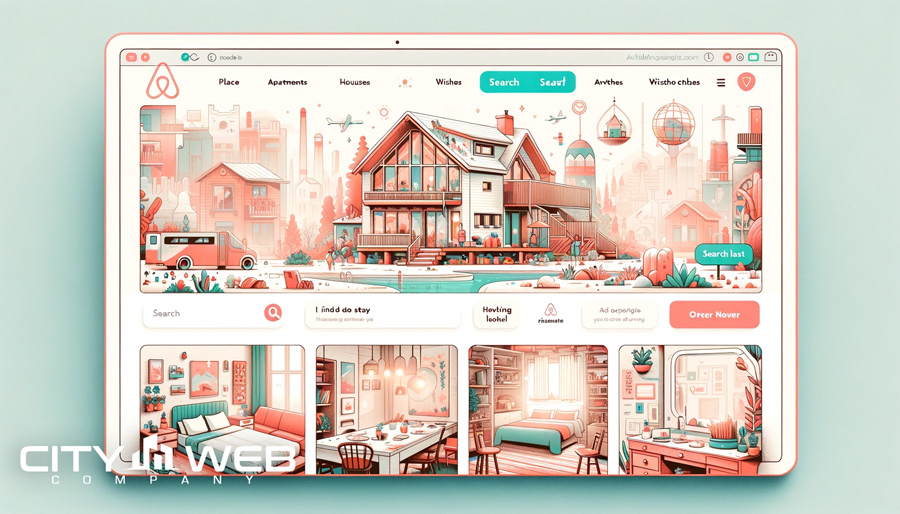
What are some examples of travel websites with exceptional design?
Some examples of travel websites with exceptional design are:
- Expedia: With its clean and intuitive interface, Expedia makes it easy for users to search and book flights, hotels, and rental cars. The website is visually appealing, with a modern and professional design that showcases beautiful imagery and helpful features.
- Airbnb: Known for its innovative approach to travel accommodations, Airbnb‘s website design is both visually stunning and user-friendly. The website uses high-quality images to highlight unique properties and offers a seamless booking experience.
- Kayak: Kayak’s website design is focused on simplicity and efficiency. It features a minimalist layout with a clear color scheme, making it easy for users to compare prices and find the best travel deals across multiple platforms.
- Booking.com: With its bold and vibrant design, Booking.com stands out among other travel websites. The website uses eye-catching visuals and a user-friendly interface to help travelers easily search and book accommodations worldwide.
- TripAdvisor: TripAdvisor’s website design combines functionality and aesthetics. It provides users with a wealth of information and user-generated reviews in a clean and organized layout. The website features a responsive design that adapts to different devices for a seamless user experience.
These travel websites showcase exceptional design by prioritizing user experience, incorporating stunning visuals, and creating intuitive interfaces that make it easy for travelers to find and book their desired services.
What are some common mistakes to avoid in travel website design?
When designing a travel website, there are a few common mistakes that you should avoid to ensure a seamless user experience. By paying attention to these aspects, you can create a website that not only looks appealing but also functions effectively to attract and engage your target audience. Here are some key mistakes to steer clear of:
- Cluttered Interface: Avoid cramming too much information on a single page. A cluttered interface overwhelms users and makes it difficult for them to find the information they are looking for. Keep your design clean and organized, allowing users to navigate effortlessly and find what they need.
- Lack of Clear Navigation: Make sure that your website’s navigation is intuitive and user-friendly. Use clear labels and hierarchies to guide users through different sections of your website. A confusing navigation structure can lead to frustration and users abandoning your site.
- Slow Page Load Times: Users expect fast-loading websites, especially when it comes to travel. Optimize your website’s performance by compressing images, minifying code, and utilizing caching techniques. Slow page load times deter users from engaging with your content and can negatively impact your website’s ranking on search engines.
- Poor Mobile Optimization: With the increasing use of mobile devices, it’s essential to ensure your travel website is fully optimized for mobile viewing. A responsive design that adjusts seamlessly to different screen sizes and orientations will create a positive user experience, regardless of the device being used.
- Inconsistent Branding: Maintain consistent branding throughout your website to establish credibility and reinforce your brand identity. Use a cohesive color scheme, fonts, and imagery that align with your brand. Inconsistency can confuse users and make your website appear unprofessional.
- Lack of Trust Signals: Building trust is crucial for any travel website. Include trust signals such as customer reviews, security badges, and clear contact information to reassure users about the reliability and safety of your services. Without these trust elements, potential customers may hesitate to make a booking or engage with your website.
- Poor Content Organization: Arrange your content in a logical and easily digestible manner. Use headings, subheadings, bullet points, and paragraphs to break up text and help users quickly scan and locate relevant information. A disorganized content layout can make it challenging for users to find what they are searching for, leading to frustration and a high bounce rate.
By avoiding these common mistakes, you can create a travel website that is visually appealing, user-friendly, and efficient in meeting the
Final Thoughts on Developing the Best Travel Website Design
Designing the best travel website requires a strategic approach that focuses on efficient and effective conversion optimization. By implementing the tips and best practices discussed in this blog post, you can create a website that not only showcases your travel business but also drives conversions and boosts your online presence.
Remember to carefully consider the placement of your calls-to-action throughout your website. Whether it’s a prominent button on your homepage or a well-placed form on your booking page, make it easy for visitors to take the next step and engage with your business.
If you’re looking for expert guidance and personalized recommendations to design the best travel website for your business, don’t hesitate to reach out to City Web Company. Contact us today for a free consultation and let our team of professionals help you take your travel website to the next level.
Don’t miss out on the opportunity to create a visually stunning and highly functional travel website that captivates your audience and drives conversions. Contact City Web Company now and let us help you design the best travel website for your business.
Frequently Asked Questions
Here are some common questions about designing the best travel website and optimizing it for conversion.
How can I design a travel website that stands out?
To create a travel website that stands out, focus on visually appealing design, user-friendly navigation, and compelling content that showcases your unique offerings.
Where should I place calls-to-action on my travel website?
Strategically place calls-to-action on prominent areas of your website, such as the homepage, booking page, and throughout the user journey, to encourage visitors to take action and convert.
How can I optimize my travel website for conversion?
Optimize your travel website for conversion by using clear and persuasive copy, compelling visuals, intuitive navigation, fast loading times, and a seamless booking process.
What are some best practices for travel website conversion optimization?
Some best practices for travel website conversion optimization include using persuasive headlines, incorporating social proof, offering incentives, simplifying the booking process, and utilizing A/B testing to optimize performance.
How can City Web Company help me design the best travel website?
City Web Company can provide expert guidance and personalized recommendations to design a visually stunning and highly functional travel website that captivates your audience and drives conversions. Contact us today for a free consultation.
Subscribe
Login
0 Comments

